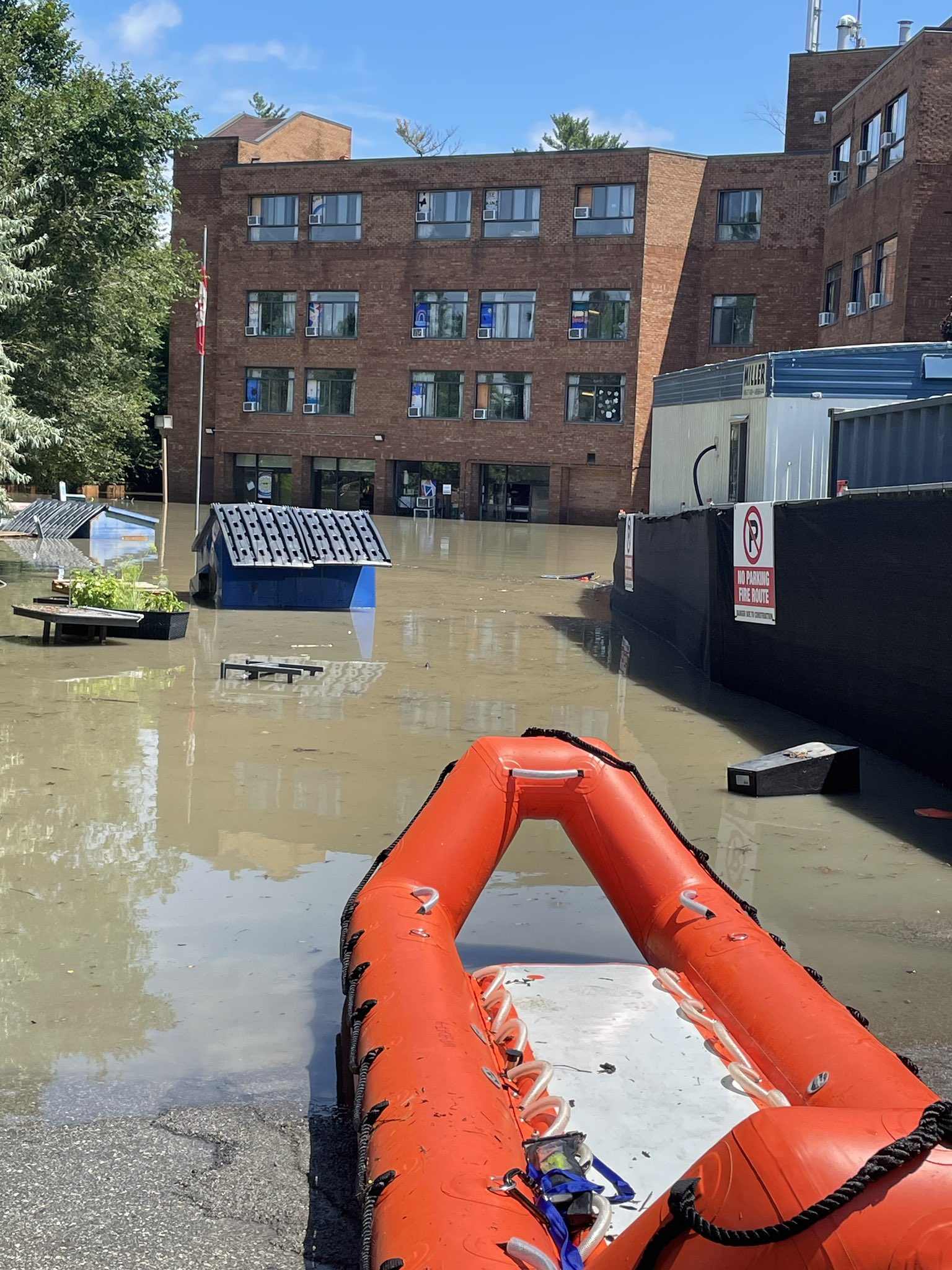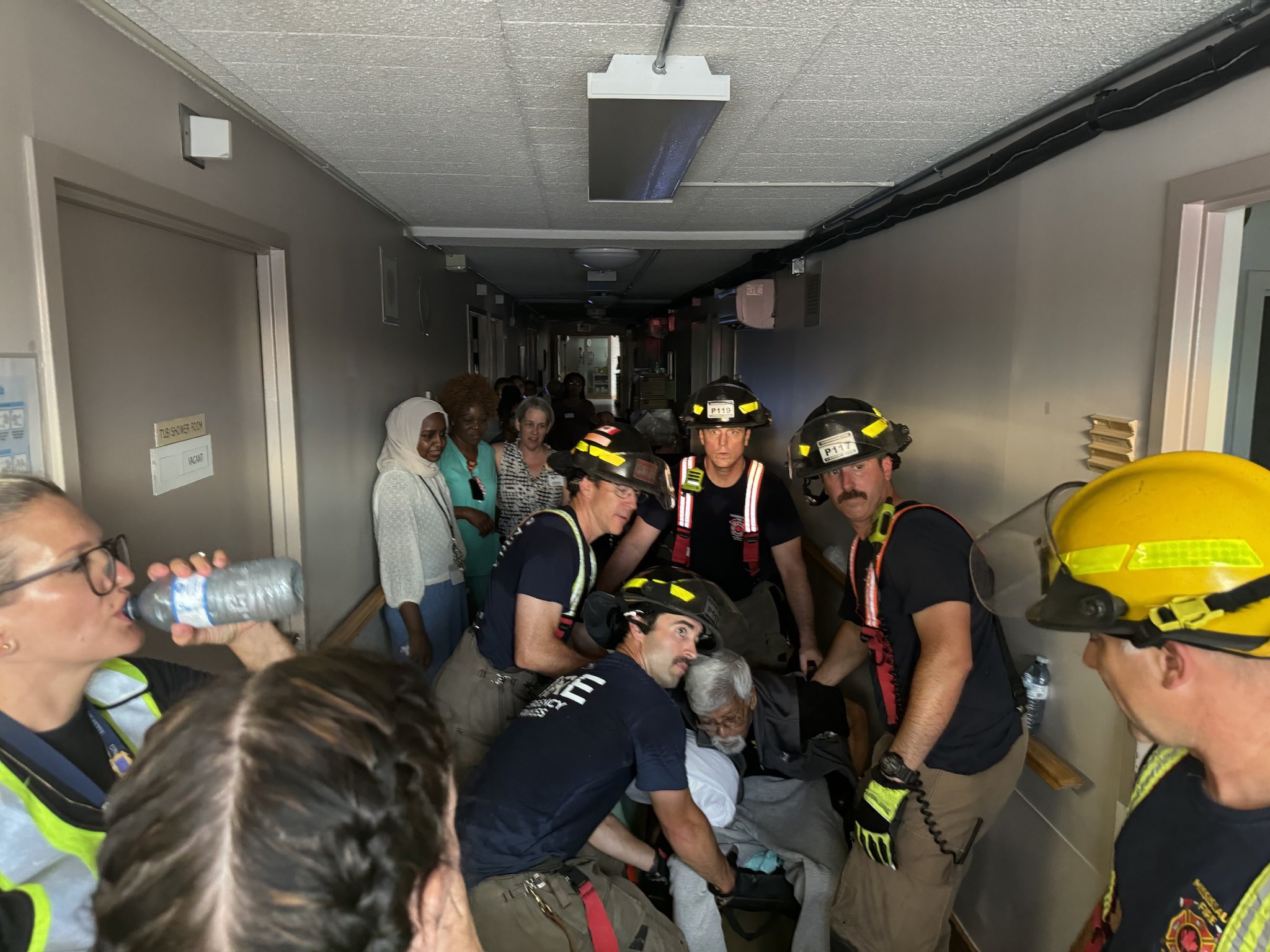
5 things to know about Winnipeg’s big sewage problem
115 billion litres, 70 years to fix, $5.5 billion in lawsuits
It looked like a river was rushing down one of the oldest roads in Mississauga because, well, that’s exactly what was happening. After record-breaking rainfall, Little Etobicoke Creek burst through its banks and flooded Dundas Street, a major artery lined with homeless shelters, long-term care homes and countless businesses.
That was on July 8, 2013.
This past June, over a decade later, the city released an environmental study of the area after that massive flood, with one clear recommendation: strengthen the banks to prevent flooding.
But the recommendation came too late.
This week, on July 16, Little Etobicoke Creek burst its banks again during another record-breaking storm. Floodwaters surged across the parking lot of the Tyndall Seniors Village — built on the creek’s banks in 1976 — turning cars and garbage bins into fast-moving aquatic hazards that smashed through the first-floor windows of the long-term care facility. The water inside the building was nearly two metres deep by the time first responders arrived. Over 12 hours, 114 senior residents were moved out on a dinghy and relocated to two hotels and two other long-term-care facilities indefinitely, the Toronto Star reports. A new facility was already planned nearby, on higher ground, but has yet to be built.


Across the Greater Toronto Area this week, the results of a torrential downpour — some parts of Ontario saw more than 121 millimetres of rain in just three hours — left destruction and gaping jaws in its wake. Drivers abandoned their cars on submerged roadways and waded to safety. A major food bank pleaded for help to save its rations in a flooded warehouse. Three workers in Halton Hills were trapped in a tunnel rapidly filling with floodwater; they were rescued, thankfully.
If you flicked past them on TV or social media, you might mistake these moments for scenes from a Hollywood disaster movie rather than reporting from a major Canadian city. But to describe them as cinematic is false, because they reflect a recurring and terrifying reality for the people impacted. And acknowledging the lessons of our reality is the only way we’ll ever learn from them.
Don’t build on floodplains.
Create more green urban spaces to help soak up water.
Expand drainage systems to handle bigger storms.
Reinforce the shores of creeks, rivers and lakes so they don’t spill into surrounding areas.
Beef up emergency response funds.
Instead, southern Ontario cities are still dominated by hard surfaces that leave rainfall nowhere to go but into our buildings and lives. Our cities are not designed to withstand extreme weather events and we’ve been slow to adapt to the realities of an increasingly volatile planet.
We know we need to. After the 2013 flood, three levels of government pledged efforts to mitigate future flood-caused damage. But in the tradeoff of political decision-making, these expensive and deeply unsexy projects are rarely pushed through quickly.
In 2017, former Toronto Mayor John Tory famously refused to support a stormwater charge that could have supported flood prevention. “It’s better not to try to unscramble an egg,” he said of a proposal to charge property owners a share of the costs to convert hard surfaces into green spaces that absorb water. Toronto City Council shelved a similar proposal again this year.
The bill for Toronto’s constant punting of the need to deal with stormwater has come due this week. Countless homeowners with flooded basements (including Ontario Premier Doug Ford himself), car dealerships with flooded lots and businesses with drowned warehouses will be filing for insurance support expected to balloon to more than one billion dollars — much more than the 2013 floods.
That bill comes as insurance companies across Canada rethink the risk of flooding. In March, Desjardins Group said it will no longer offer new mortgages or insurance in high-risk flood zones.
As the Doug Ford government pushes development through green spaces and weakens conservation authorities, we’re left with a province dangerously exposed to extreme weather.
Toronto City Hall was leaking hours before a flood warning was issued. The Don Valley Parkway — the only expressway connecting downtown Toronto to the north of the city — was quickly submerged, yet stayed open until drivers were already stranded in the water. An overwhelmed sewer system left three Toronto water treatment facilities with no choice but to discharge 1.3 billion litres of partially treated sewage into Lake Ontario.
Even the buildings and spaces designed to withstand extreme floods couldn’t. Toronto’s Evergreen Brickworks was unscathed during the 2013 floods thanks to a robust preparation and mitigation plan. To protect the repurposed site, which is on a flood plain, it was constructed with permeable materials, green spaces and 20,000-litre rain barrels. And still, it’s underwater and closed indefinitely.
Over my five years as a climate reporter, I’ve tried to convey that global warming and its results aren’t an abstract phenomenon. From buildings and housing to health, wildlife and the economy, the climate emergency will impact every aspect of our lives — as it clearly did this week in southern Ontario. And we need to reckon with these impacts, which unfortunately aren’t new.
In 1954, Hurricane Hazel dropped 111 millimetres of rain in 12 hours on Toronto and 81 people were killed. It was one of Ontario’s worst natural disasters to date. The response then was to usher in flood-prevention policies — such as protected green spaces and more careful development practices — and conservation authorities to enact them. Meteorologists have used the term “100-year storm” to describe an event like Hurricane Hazel, which means there is a one per cent chance of it occurring in any given year. Since 2013, the Greater Toronto Area has had three, including this week.
Still, many governments have delayed their duty to reduce risk and mitigate the effects of such storms. But it is possible to act quickly and effectively.
After devastating floods in 2004 caused more than $100 million in damage, the City of Peterborough earmarked up to $5 million annually to implement a flood-reduction program that has seen buildings and sewer systems upgraded to handle extreme rainfall. It has meant that recent storms were less destructive, and less expensive.
The catastrophic floods of July 16 are a reminder that the Greater Toronto Area is still profoundly unprepared for the future that climate change will bring. But the storms of that future are already gathering on the horizon — bigger, wetter and getting closer every day.
Get the inside scoop on The Narwhal’s environment and climate reporting by signing up for our free newsletter. On a warm September evening nearly 15...
Continue reading
115 billion litres, 70 years to fix, $5.5 billion in lawsuits

Climate change, geopolitics and business opportunities power a blue economy

10 billion litres of sewage are dumped into Winnipeg’s lakes and rivers each year. Some...
